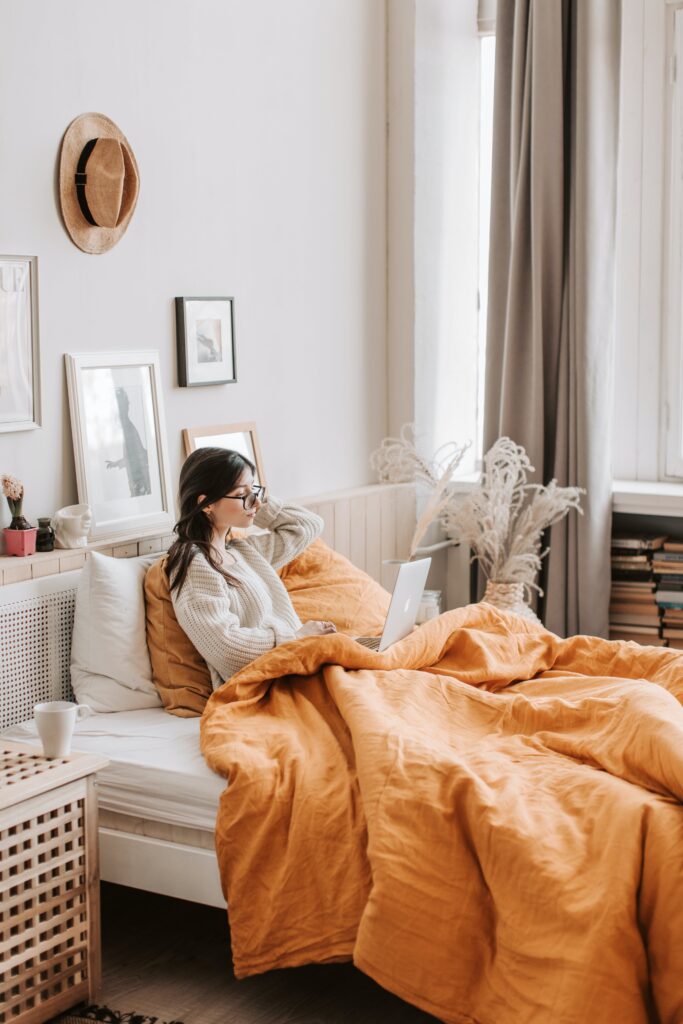Relaxxxx and feel home
In the hustle and bustle of our daily lives, our homes stand as more than mere structures; they function as our personal sanctuaries. Within their walls, we seek solace, unwind, recharge, and find respite from the demands of the outside world. Yet, in the quest for a truly relaxing space, how can we transform our homes into personal oases?

Embarking on this journey toward creating a haven within our living spaces involves more than just arranging furniture. It’s a holistic approach that intertwines comfort, aesthetics, and functionality. The following tips are poised to guide you in this endeavor, offering insights into crafting a home environment that not only meets your basic needs but also elevates your living experience to the realm of tranquility and serenity. So, let’s explore these practical and creative suggestions that are sure to inspire the transformation of your home into a haven of relaxation and personal well-being.
1. Embrace Natural Elements
Nature has a calming effect on our minds. By incorporating natural elements into your home, you can create a serene environment that promotes relaxation. Indoor plants are a great way to bring nature indoors. They not only enhance the aesthetic appeal of your home but also improve air quality by filtering out harmful toxins.
You can choose from a variety of indoor plants such as snake plants, spider plants, or peace lilies, each with their unique care requirements and aesthetic appeal. Additionally, using natural materials like wood and stone in your decor can add a rustic charm to your home, making it feel more grounded and connected to nature.

2. Prioritize Comfort

Comfort is key when creating a relaxing space. Invest in comfortable furniture that supports your body and promotes relaxation. Opt for sofas and chairs with plush cushions, and soft textiles, and don’t forget to add plenty of soft throw pillows and blankets for extra coziness.
Your bedroom should also be a haven of comfort, so invest in a high-quality mattress, soft sheets, and pillows that support your neck and spine. Remember, the more comfortable your home, the more relaxed you’ll feel.
3. Create a Dedicated Relaxation Space
Having a dedicated space for relaxation activities can significantly enhance the tranquility of your home. This could be a reading nook with a comfortable chair and good lighting, a meditation corner with calming artwork and cushions, or a home spa with scented candles and luxurious bath products.
This space should be free from distractions and equipped with everything you need to relax, such as a soft blanket, a good book, or a yoga mat. Having a dedicated relaxation space can serve as a visual reminder to take time for yourself each day.

4. Use Calming Colors

Colors have a significant impact on our mood. Cool colors like blue, green, and lavender are known to have a calming effect. Consider using these colors in your decor or wall paint to create a soothing atmosphere.
You can also use color psychology to enhance the mood of different rooms. For example, blues and greens are great for bedrooms and bathrooms where you want to promote relaxation, while warmer colors like reds and oranges can be used in the living room or dining room to create a cozy, inviting atmosphere.
5. Control the Clutter
A cluttered space can lead to a cluttered mind. Regularly decluttering your home can make your space feel more open and peaceful. Consider adopting minimalist design principles, which emphasize simplicity and functionality.
This doesn’t mean you have to get rid of all your possessions, but rather that you should carefully curate your belongings and keep only those that serve a purpose or bring you joy. Regularly decluttering and organizing your home can also save you time and stress in the long run.

6. Pay Attention to Lighting

Lighting plays a crucial role in setting the mood of a space. Opt for soft, warm lighting to create a cozy and inviting atmosphere. You can use dimmable lights or install a dimmer switch to adjust the brightness of your lights according to your mood or the time of day.
During the day, make the most of natural light by keeping your windows clean and using light, sheer curtains that allow light to filter through. In the evening, you can use candles or fairy lights to create a magical, soothing ambiance.
7. Incorporate Relaxing Scents
Scents can have a powerful effect on our mood and emotions. Aromatherapy, the practice of using essential oils for health and well-being, can be a great way to enhance the relaxing atmosphere of your home.
Consider using aromatic elements like essential oils or scented candles to fill your home with relaxing fragrances. Lavender is known for its calming properties, chamomile can help reduce anxiety, and sandalwood can help create a peaceful, meditative atmosphere.

By implementing these tips, you have the power to metamorphose your home into a personalized oasis, a haven where the stresses of daily life melt away, leaving behind a sanctuary for relaxation and rejuvenation. Keep in mind that the overarching objective is to curate a space that resonates uniquely with you – a space that not only meets your practical needs but, more importantly, envelops you in an atmosphere of peace and comfort.
Consider these tips as building blocks in the construction of your own retreat, where every corner reflects your taste, preferences, and personality. It’s about infusing your living space with elements that evoke tranquility, creating a symbiotic relationship between your surroundings and your well-being. From strategic furniture arrangements to mindful decor choices, each facet contributes to the overarching goal of transforming your home into a haven tailored to meet your relaxation needs.
As you embark on this transformative journey, embrace the idea of your home not merely as a physical dwelling but as a living, breathing extension of yourself. Let the ambiance you cultivate within its walls be a testament to your commitment to self-care, providing a refuge where you can unwind, recharge, and find solace amidst life’s demands. The process of creating a personal oasis is an ongoing exploration, an endeavor to shape an environment that continually nurtures and sustains your sense of peace and well-being.







